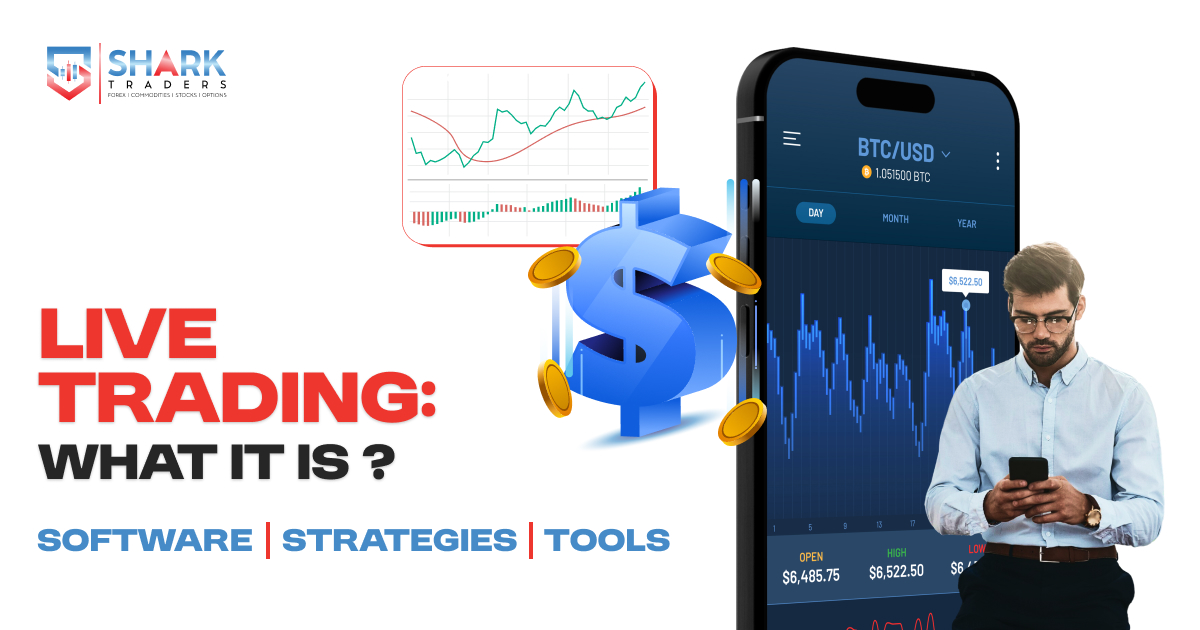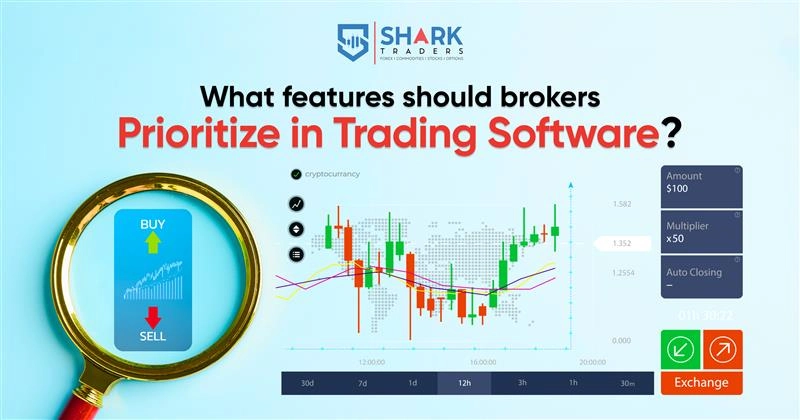Trading markets are extremely volatile, and live trading offers the true thrill and excitement of trading! It is where trades are executed in real time using actual funds, leaving no room for mistakes and every move counts! But the fun of live trading comes with real consequences. Whether you make profits or face losses, you have to deal with them. Therefore, it’s crucial to avoid rushing and to fully grasp the intricacies of live trading and the market. This guide will explore what live trading involves, how to get started, commonly used strategies, and much more. Let’s dive in.
Understanding Live Trading
Live trading is the practice of using real money to buy and sell financial assets in real time, such as stocks, forex, cryptocurrency, or other assets in their respective markets. These financial markets are constantly shifting, demanding intense focus and a thorough understanding of the risks involved in each move.
Now, it is very different from paper trading or trading in a demo account, where neither the risk nor the money is real. Many traders practice on a demo account in order to avoid the consequences of trading, both good and bad.
However, when you live trade, there is no room for trials! You will face losses and profits based on how you monitor risk, how quickly you place the trade, and how volatile the market is. Although the results are the collective impact of your skills and market dynamics, with experience, you can navigate this balance more effectively.
Here are some of the key Characteristics of Live Trading:
- Trades are executed on the live market at the current asset prices.
- Trading software is used to connect to financial markets, monitor market trends, and place orders.
- Actual capital is used for live trading, which involves real financial gains or losses.
- It requires immediate response and ongoing attention to economic data or market news.
Retail traders, professional traders, and institutional traders all participate in the markets, but trading approaches vary based on their skill levels, strategies, and available capital.
What Is Required For Live Trading?
Anyone getting started with live trading should have the following before they begin:
A Reliable Brokerage Account
A trader can’t just directly enter the market and start live trading. You must partner with a licensed broker who can provide you with access to the financial market of your choice, whether it is forex, cryptocurrency, or something else.
A Live Trading Platform
You need a trading platform to actually analyze the market and place trades. The following is the list of most popular trading software:
- Shark Trader: Advanced & Multi-feaure trading platform
- MetaTrader 4 / 5: Common for forex and CFD trading
- TradingView: Web-based trading platform
- NinjaTrader: Futures and active day trading software
- Interactive Brokers TWS: Ideal for professional traders
Shark Trader is one of the most powerful trading platforms that is employed by traders worldwide. It is the leading platform due to its high-end functionality, offering advanced trading tools, multiple order types, and much more.
Real-Time Market Data Feed
You would need the latest information on the asset prices and market fluctuations. Live data can ensure the trades are executed in real time without any price slippage.
Trading Capital
To begin trading, you obviously need a considerable amount of money. However, it is advised to start small and increase your investment eventually as you improve your skills.
A Well-Tested Strategy
You can choose a trading strategy that has worked for you during paper trading. Experimenting in the live market isn’t a great option.
Risk Management System
Use the right position, set stop-losses, and take profits to protect your account and lower the risk probability involved with trading. Additionally, it’s important to choose a risk that you can actually afford because it’s easier to become overly excited by the leverage option and its perks.
Most Popular Live Trading Strategies
Choosing the right trading platform is important, but so is selecting the best trading strategy for live trading. Here’s a quick overview of the most common strategies used by live traders:
- Day trading: It entails buying and selling assets on the same day in order to profit from single-day price fluctuations.
- Swing Trading: It is a long-term trading strategy in which the trade is held for an extended period of time in order to capitalize on market swings.
- Scalping: It is the practice of trading on trades that last a fraction of the time. The aim is to make small profits from frequent trades.
- Algorithmic Trading: It is an automated trading practice where trade is executed as per pre-defined conditions.
- News Trading: Trading based on recent market announcements and understanding their impact on market fluctuations.
Common Challenges of Live Trading
To avoid being swayed by the trading thrill, keep the following live trading challenges in mind.
- Some traders trade excessively and actually limit their efficiency. Everything in excess is bad, so take breaks in between and avoid overtrading.
- Price deviations are quick, especially in the cryptocurrency markets. So it is advisable to be extra cautious and quick.
- Sometimes not just because of a lack of quickness, but technical issues like slow internet, software downtime, etc., can lead to price slippages. That’s why you should always choose a reliable trading platform.
- It is easier to get overpowered by emotions and make rash decisions fueled by adrenaline. Make sure to stay calm and smartly make every trade.
Conclusion
Live trading can be a rewarding experience when approached correctly. In this article, we have cited all the ins and outs of live trading that you should know when about to participate in the financial markets. Just make sure to keep in mind that live trading is a long learning process that can be mastered with interest, dedication, and practice. For valuable insights on trading and access to top fintech solutions, Shark Technologies is your ideal partner. Explore our offerings today!
Also Read : Emerging Trends in Margin Trading Exchange Development for 2025





